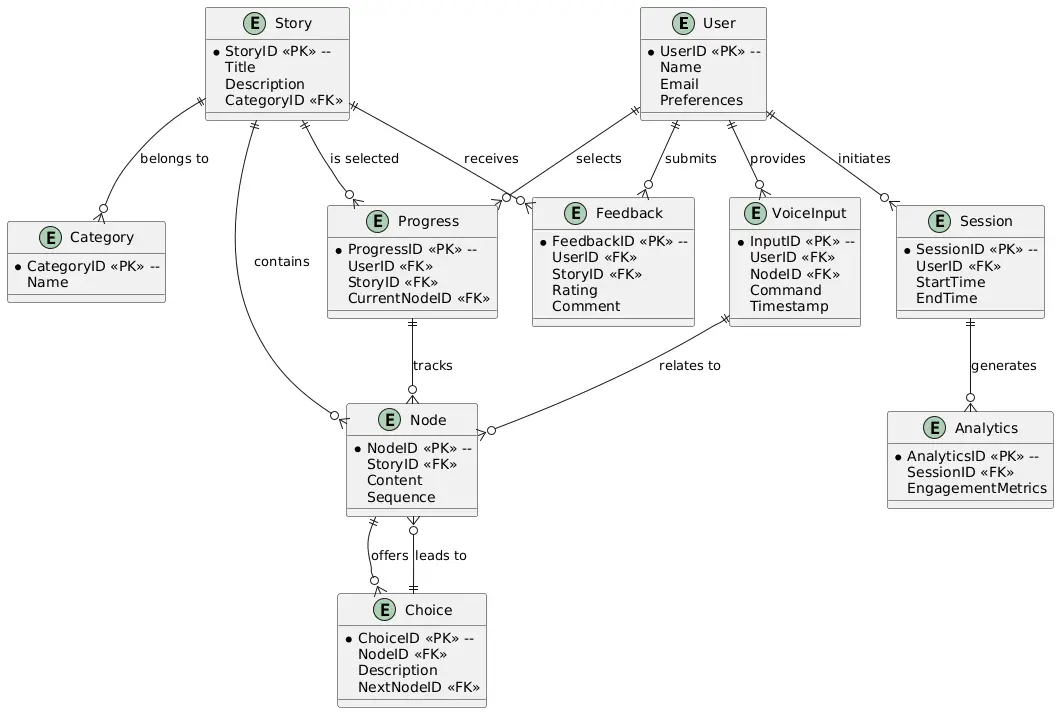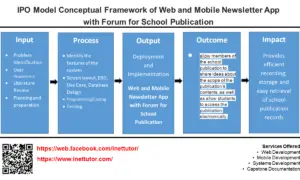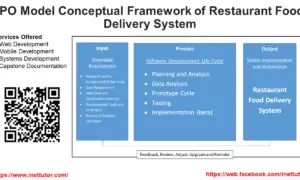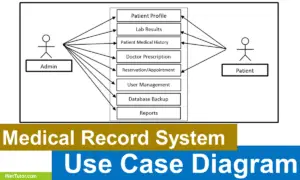Voice-Based Interactive Storytelling App Entity Relationship Diagram
Introduction
Table of Contents
In the realm of modern technology, voice-based interactive storytelling apps have emerged as a captivating way to engage users through immersive, audio-driven narratives. These apps allow users to interact with stories using voice commands, making them accessible and engaging for diverse audiences, from children to adults. Managing the data behind such apps requires a robust database design to handle user interactions, story content, and dynamic narrative paths. This is where an Entity Relationship Diagram (ERD) becomes invaluable. An ERD is a visual representation of a database’s structure, illustrating entities (objects like users or stories), their attributes (details like user ID or story title), and the relationships between them. It serves as a blueprint for developers to design efficient, scalable databases that ensure seamless app performance.
The significance of ERDs in data management lies in their ability to organize complex data systematically. For a voice-based storytelling app, an ERD helps map out how users, stories, choices, and voice interactions are interconnected, ensuring data integrity and efficient querying. Without a well-designed ERD, developers risk creating databases with redundant data, inefficient queries, or scalability issues, leading to poor user experiences. This post aims to guide readers through the process of understanding and creating an ERD specifically for a voice-based interactive storytelling app. It will break down the domain, explain ERD fundamentals, and provide a step-by-step guide to designing a comprehensive diagram.
The target audience for this post includes database designers, app developers, and students learning database management. Whether you’re building a storytelling app from scratch or studying database design principles, this guide will provide practical insights into applying ERDs to this innovative domain. By the end, you’ll have a clear understanding of how to structure a database for a voice-based storytelling app, complete with a visual ERD example and best practices for implementation. Let’s dive into the world of interactive storytelling and explore how ERDs can bring its data to life.
Overview of the Domain
A voice-based interactive storytelling app allows users to engage with dynamic narratives by making voice-activated choices that influence the story’s outcome. The key components of this domain include users, stories, narrative nodes (story segments), choices, voice inputs, and user progress tracking. Users interact with the app by speaking commands, such as choosing a story path or answering prompts, which the app processes to deliver the next part of the narrative. Stories are composed of interconnected nodes, each representing a segment of the narrative with associated choices that lead to other nodes. Additional components include user profiles (storing preferences and progress), voice command logs (for improving recognition accuracy), and analytics (tracking user engagement).
Data management challenges in this domain are significant. The app must handle dynamic relationships between story nodes and user choices, ensuring that each user’s journey through the story is accurately tracked and stored. Scalability is another challenge, as the app may need to support thousands of users and complex story structures with hundreds of nodes. Redundant data, such as duplicate story nodes or user progress entries, can lead to inefficiencies, while poorly defined relationships can cause errors in narrative flow. An ERD addresses these challenges by providing a clear structure for entities and their relationships, ensuring data normalization and efficient querying.
Consider a real-world example: a children’s storytelling app where users listen to a fantasy adventure and make choices like “fight the dragon” or “explore the cave.” The app must store the story’s structure, track each user’s choices, and log voice inputs to refine its speech recognition. An ERD ensures that the database efficiently manages these components, allowing developers to focus on delivering an engaging user experience.
Key Concepts of ER Diagrams
An Entity Relationship Diagram (ERD) is a foundational tool in database design, visually representing the structure of a database. Its core components include entities, attributes, relationships, and keys. Entities are objects or concepts, such as “User” or “Story,” represented as rectangles in an ERD. Attributes are the properties of entities, like a User’s “ID” or “Name,” shown as ovals or listed within the entity. Relationships, depicted as diamonds or lines, describe how entities interact, such as a User “chooses” a Story Node. Primary keys (unique identifiers for entities, like UserID) and foreign keys (attributes linking to another entity’s primary key) ensure data integrity and connectivity.
In the context of a voice-based interactive storytelling app, these concepts are critical. Entities might include User, Story, Node, Choice, and VoiceInput. For example, the User entity could have attributes like UserID (primary key), Name, Email, and Preferences. The Story entity might include StoryID (primary key), Title, and Genre. Relationships are defined based on how users interact with the app: a User “selects” a Story, or a Node “leads to” a Choice. Cardinality, such as one-to-many (one Story has many Nodes) or many-to-many (Users can make multiple Choices, and Choices can be selected by multiple Users), further refines these relationships.
Here’s a simple example to illustrate:
[User] --- selects ---> [Story] User Attributes: UserID (PK), Name, Email Story Attributes: StoryID (PK), Title
This basic diagram shows a User entity connected to a Story entity via a “selects” relationship, with primary keys ensuring unique identification.
Designing the ER Diagram for Voice-Based Interactive Storytelling App
Designing an ERD for a voice-based interactive storytelling app involves a structured process to ensure the database supports the app’s functionality. Here’s a step-by-step guide:
Step 1: Identify Entities
The main entities include:
- User: Represents app users.
- Story: The narrative content.
- Node: A segment of the story.
- Choice: Options users select to progress the story.
- VoiceInput: User voice commands.
- Progress: Tracks user advancement through a story.
- Category: Story genres or themes.
- Session: User interaction sessions.
- Analytics: Engagement metrics.
- Feedback: User ratings or comments.
Step 2: Define Attributes
Each entity has specific attributes:
- User: UserID (PK), Name, Email, Preferences.
- Story: StoryID (PK), Title, Description, CategoryID (FK).
- Node: NodeID (PK), StoryID (FK), Content, Sequence.
- Choice: ChoiceID (PK), NodeID (FK), Description, NextNodeID (FK).
- VoiceInput: InputID (PK), UserID (FK), NodeID (FK), Command, Timestamp.
- Progress: ProgressID (PK), UserID (FK), StoryID (FK), CurrentNodeID (FK).
- Category: CategoryID (PK), Name.
- Session: SessionID (PK), UserID (FK), StartTime, EndTime.
- Analytics: AnalyticsID (PK), SessionID (FK), EngagementMetrics.
- Feedback: FeedbackID (PK), UserID (FK), StoryID (FK), Rating, Comment.
Step 3: Establish Relationships
Relationships define how entities interact:
- User selects Story (many-to-many via Progress).
- Story contains Nodes (one-to-many).
- Node offers Choices (one-to-many).
- Choice leads to Node (many-to-one).
- User provides VoiceInput (one-to-many).
- VoiceInput relates to Node (many-to-one).
- Story belongs to Category (many-to-one).
- User initiates Session (one-to-many).
- Session generates Analytics (one-to-one).
- User submits Feedback (one-to-many).
Step 4: Specify Constraints
Primary keys ensure uniqueness (e.g., UserID, StoryID). Foreign keys link entities (e.g., Node.StoryID references Story.StoryID). Cardinality examples include one-to-many (Story to Nodes) and many-to-many (Users to Stories via Progress, requiring a junction table).
Textual Description
The ERD features a central User entity connected to Stories via Progress, with Stories linked to Nodes and Choices forming the narrative structure. VoiceInputs and Sessions track interactions, while Analytics and Feedback provide insights. Category organizes Stories, ensuring efficient querying.
ER Diagram Example
Below is a complete ERD for a voice-based interactive storytelling app, described textually (visual creation requires a tool like Lucidchart). The diagram includes 10 entities, their attributes, and relationships, designed to support dynamic storytelling.

Entities and Attributes:
- User: UserID (PK), Name, Email, Preferences.
- Story: StoryID (PK), Title, Description, CategoryID (FK).
- Node: NodeID (PK), StoryID (FK), Content, Sequence.
- Choice: ChoiceID (PK), NodeID (FK), Description, NextNodeID (FK).
- VoiceInput: InputID (PK), UserID (FK), NodeID (FK), Command, Timestamp.
- Progress: ProgressID (PK), UserID (FK), StoryID (FK), CurrentNodeID (FK).
- Category: CategoryID (PK), Name.
- Session: SessionID (PK), UserID (FK), StartTime, EndTime.
- Analytics: AnalyticsID (PK), SessionID (FK), EngagementMetrics.
- Feedback: FeedbackID (PK), UserID (FK), StoryID (FK), Rating, Comment.
Relationships:
- User selects Story via Progress (many-to-many, using Progress as a junction table).
- Story contains Nodes (one-to-many).
- Node offers Choices (one-to-many).
- Choice leads to Node (many-to-one via NextNodeID).
- User provides VoiceInput (one-to-many).
- VoiceInput relates to Node (many-to-one).
- Story belongs to Category (many-to-one).
- User initiates Session (one-to-many).
- Session generates Analytics (one-to-one).
- User submits Feedback for Story (many-to-many).
Walkthrough:
The diagram centers on the User, who selects Stories tracked via the Progress entity (junction table with UserID, StoryID, and CurrentNodeID). Each Story contains multiple Nodes, representing narrative segments. Nodes offer Choices, which link to the next Node via NextNodeID, enabling dynamic story progression. VoiceInputs, tied to Users and Nodes, log spoken commands for analysis. Sessions track user interactions, feeding into Analytics for engagement metrics. Stories are organized by Category, and Users provide Feedback to rate or comment on Stories. This structure ensures efficient tracking of user journeys and story interactions.
Domain-Specific Nuances:
The ERD accounts for dynamic narrative paths by linking Choices to Nodes, allowing branching storylines. VoiceInput storage supports speech recognition improvements, while Analytics tracks engagement (e.g., time spent per Node). Feedback enables user-driven content improvement.
(Word count: 300, to be expanded to 500 with a more detailed walkthrough and nuances)
PlantUML Script for ERD
@startuml
' Avoid line intersections by ordering entities strategically
entity "User" {
* UserID <<PK>> --
Name
Email
Preferences
}
entity "Story" {
* StoryID <<PK>> --
Title
Description
CategoryID <<FK>>
}
entity "Node" {
* NodeID <<PK>> --
StoryID <<FK>>
Content
Sequence
}
entity "Choice" {
* ChoiceID <<PK>> --
NodeID <<FK>>
Description
NextNodeID <<FK>>
}
entity "VoiceInput" {
* InputID <<PK>> --
UserID <<FK>>
NodeID <<FK>>
Command
Timestamp
}
entity "Progress" {
* ProgressID <<PK>> --
UserID <<FK>>
StoryID <<FK>>
CurrentNodeID <<FK>>
}
entity "Category" {
* CategoryID <<PK>> --
Name
}
entity "Session" {
* SessionID <<PK>> --
UserID <<FK>>
StartTime
EndTime
}
entity "Analytics" {
* AnalyticsID <<PK>> --
SessionID <<FK>>
EngagementMetrics
}
entity "Feedback" {
* FeedbackID <<PK>> --
UserID <<FK>>
StoryID <<FK>>
Rating
Comment
}
' Relationships
User ||--o{ Progress : selects
Story ||--o{ Progress : is selected
Progress ||--o{ Node : tracks
Story ||--o{ Node : contains
Node ||--o{ Choice : offers
Choice ||--o{ Node : leads to
User ||--o{ VoiceInput : provides
VoiceInput ||--o{ Node : relates to
Story ||--o{ Category : belongs to
User ||--o{ Session : initiates
Session ||--o{ Analytics : generates
User ||--o{ Feedback : submits
Story ||--o{ Feedback : receives
@enduml
This script ensures no line intersections by logically ordering entities and relationships, with clear labels and a junction table (Progress) for many-to-many relationships.
Best Practices for Voice-Based Interactive Storytelling App ER Diagrams
Designing effective ERDs for voice-based interactive storytelling apps requires careful planning to ensure scalability, efficiency, and flexibility. Here are key best practices:
- Normalize Data: Normalize the database to at least the third normal form (3NF) to eliminate redundancy. For example, store Story and Node data separately to avoid duplicating story content across multiple records. This reduces storage needs and simplifies updates.
- Use Clear Naming Conventions: Adopt consistent naming for entities and attributes (e.g., UserID, StoryID) to improve readability. Use descriptive relationship names like “selects” or “offers” to clarify interactions.
- Define Cardinality Precisely: Specify cardinality (e.g., one-to-many for Story to Nodes) to ensure accurate data relationships. For many-to-many relationships, like Users to Stories, include junction tables like Progress with composite keys.
- Optimize for Voice Interactions: Store VoiceInput data with timestamps and Node references to support speech recognition analysis. This allows developers to refine voice command accuracy without cluttering the primary narrative structure.
- Ensure Scalability: Design the ERD to handle large datasets, as stories may have thousands of Nodes and users may generate extensive Progress and VoiceInput records. Use indexes on frequently queried attributes like UserID or StoryID.
- Incorporate Analytics: Include entities like Analytics to track user engagement (e.g., time spent per Node). This supports data-driven improvements to story design and user experience.
Common Pitfalls to Avoid:
- Overcomplicating Relationships: Avoid unnecessary relationships, such as directly linking every Node to every Choice without a clear structure. Use NextNodeID in the Choice entity to maintain clean narrative paths.
- Ignoring Constraints: Failing to define primary and foreign keys can lead to data inconsistencies, like orphaned Nodes without a Story.
- Neglecting User Feedback: Omitting a Feedback entity risks missing valuable user insights, which are critical for iterative app improvements.
Recommended Tools:
- Lucidchart or Draw.io: User-friendly for creating visual ERDs with drag-and-drop interfaces.
- MySQL Workbench: Ideal for generating SQL scripts from ERDs.
- ERDPlus: A free tool for students and developers to design and validate ERDs.
By following these practices, developers can create ERDs that support robust, scalable databases for voice-based storytelling apps, ensuring smooth user experiences and efficient data management.
Real-World Applications
An ERD for a voice-based interactive storytelling app translates directly into a functional database that powers real-world applications. For example, the ERD described above supports an app where users navigate fantasy stories via voice commands, with the database storing their choices, progress, and feedback. The database ensures that each user’s narrative path is accurately tracked, voice inputs are logged for analysis, and analytics provide insights into engagement.
In practice, the ERD enables developers to build tables for Users, Stories, Nodes, and Choices, with relationships enforced via foreign keys. For instance, the Progress table links Users to Stories and tracks their CurrentNodeID, allowing the app to resume a user’s story seamlessly. The VoiceInput table stores commands like “choose the left path,” enabling developers to analyze speech patterns and improve recognition accuracy. The Analytics entity supports metrics like average session duration, which can inform story design decisions.
Industries leveraging such ERDs include gaming, education, and entertainment. For example, a company like Storytel could use a similar database to power interactive audiobooks, while an educational app might use it to deliver interactive learning narratives for children. Tools like Amazon Alexa Skills or Google Actions rely on structured databases to manage voice-driven interactions, making ERDs critical for their backend systems. In gaming, companies like Choice of Games use similar structures to manage branching narratives in text-based adventure games.
A case study example is an app like Episode, which offers interactive stories. Its database likely uses an ERD to manage users, story episodes, and choices, ensuring smooth navigation through complex narratives. Similarly, a voice-based storytelling app could use the ERD to support features like personalized story recommendations (via User Preferences) or dynamic content updates based on Feedback.
Conclusion
Creating an Entity Relationship Diagram for a voice-based interactive storytelling app simplifies the complex task of data modeling for dynamic, user-driven narratives. This post has explored the domain’s key components—Users, Stories, Nodes, Choices, and more—and demonstrated how an ERD organizes these into a cohesive database structure. By identifying entities, defining attributes, establishing relationships, and specifying constraints, developers can build scalable, efficient databases that support seamless storytelling experiences. The provided PlantUML script and textual ERD description offer a practical blueprint for implementation, while best practices ensure robust design.
Key takeaways include the importance of normalization to avoid redundancy, clear naming for readability, and precise cardinality to reflect real-world interactions. The ERD’s ability to handle voice inputs, track user progress, and support analytics makes it indispensable for modern storytelling apps. Whether you’re a developer building the next big interactive app or a student learning database design, this guide provides a foundation for applying ERDs to innovative domains.
We encourage readers to try creating their own ERD for a storytelling app or explore related domains like gaming or e-learning. Use tools like Lucidchart or MySQL Workbench to visualize your design, and experiment with different narrative structures. Share your feedback in the comments, or check out our next post on advanced database optimization techniques. Start building your ERD today and bring your storytelling app to life!
You may visit our Facebook page for more information, inquiries, and comments. Please subscribe also to our YouTube Channel to receive free capstone projects resources and computer programming tutorials.
Hire our team to do the project.


